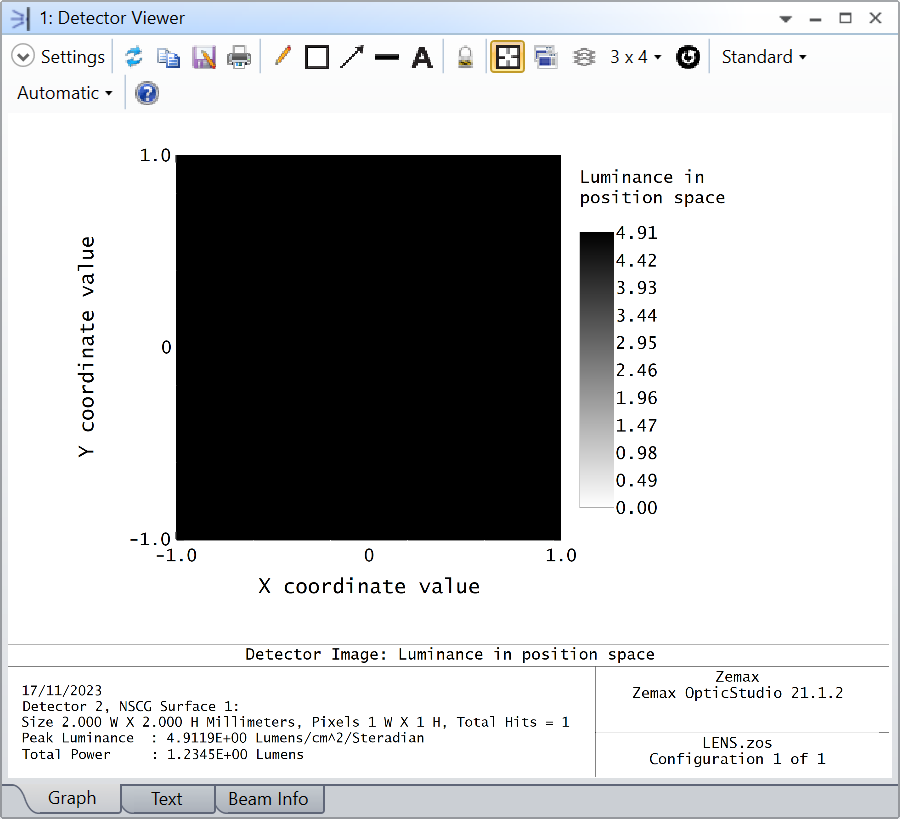I have a detector rectangle in my system. In the detector view for this detector, I can select show data to be either “Radiance/Luminous (area space)” or “Radiance/Luminous (angle space)” depending on my source units. Then below the image/plot in the lower left box there a number labeled either “Peak Radiance/Luminance” in W/cm^2/Steradian or lm/cm^2/Steradians. How do I get this number to appear in a Merit function?
I can easily get the other number, “Total Power”, in the plot to appear in the Merit function using NSDD with Pix#=0 and Data=0. I thought setting the Detector Rectangle Data Type = 5 and setting NSDD Pix#=-1 and Data=2 would work but instead that seems to give me the peak Luminous Intensity in Lm/Sr.
Is there really no way to read out the Radiance/Luminous in a Merit function?





